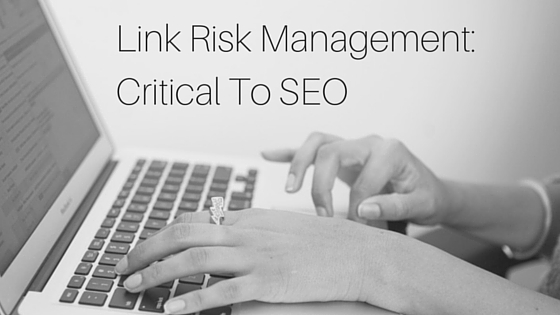
Penguin is, without a doubt, one of Google’s most impactful algorithm updates to date. First rolled out in 2012, it penalized thousands of websites in its first run. Site owners became vigilant against suspicious backlinks and became driven to get rid of any link that might hint at being spammy.
Since then, webmasters have been kept on their toes by Penguin’s rollouts as Google continues to improve their definition of what is and is not a good link. One way to determine whether or not your link profile contains good links is to be aware of your link risk and managing it effectively.
What is Link Risk Management?
Link risk management is a process that came about from the continuous changes to linking and SEO ranking factors. SEO has become more than just a way to win traffic and get better visibility; it’s the way to maintain and improve the quality of your digital assets (i.e. your website).
Instead of waiting for a penalty from Penguin to occur, link risk management is about insuring your traffic and it’s resulting revenue from being affected by Penguin roll-outs in the first place. It’s easier and better to be proactive and prevent damage than to map out a response once a penalty has been placed against your website.
Link risk management consists of common tasks completed when necessary by SEOs:
- Recovery from manual or Penguin penalties
- Protection from negative/black-hat SEO and poor quality inbound links
- Legitimate link-building practices
Recovery from Penalties
Webmasters that have been affected by a manual penalty understand how difficult the recovery process can be. Organic traffic is usually the primary source of traffic to a website, and to lose that can mean lost revenue that can seriously hurt the business. Recovery from these penalties is possible, usually through the disavow tool available to webmasters through the search console. In practice, the process takes a long time; patience and continuous effort is necessary. There are four parts to recovering from penalties:
Backlink Review
Usually, you can only get a portion of your backlinks from Google’s Search Console. To get a more complete picture, tools such as SEMRush or Raven are necessary. Using these tools, you can download a spreadsheet of your total links and review them for quality as well as if they’re relevant to your website.
Link Analysis
When analyzing your links, the first thing you need to do is have a understanding of what makes a good link. This can be found in the recently released search guidelines as well as in Google’s webmaster guidelines, both of which can be found on Google’s website.
Link analysis gets more difficult as the number of backlinks increases due to it being a manual process. You have to check each link and note where they originate from. Spammy and irrelevant sites should be noted for further action (see below). Sites, especially those that have paid links, will have an inordinate amount of links to get through. However, this process can be partially automated to help ease the burden of this arduous process.
Disavowing and removal
Once you determine your list of bad backlinks, the next step is to try getting them removed. You should first try and reach out to the webmasters from where the bad links originate from and have them remove them from their site. Barring that, you can disavow them by adding them to your disavow file for the Search Console. The disavow tool notifies Google that you don’t want those links considered during their assessment of your site.
Waiting
Finally, after performing all of these actions, you have to wait for Google to respond. If you’ve received a manual penalty, you’ll need to file your reconsideration request to Google and then wait for them to re-review your website. This process can take anywhere from a few days to a few months depending. Unfortunately, if you’ve been dinged with a algorithmic penalty, such as Penguin, you have to wait for the next update to roll out, and with Penguin’s infrequent rollouts, this could take quite a while.
Recovery is possible, but it takes time and effort, and can be a very stressful process for webmasters and SEOs. Even when you’ve recovered, it’s not assured that you’ll regain your original rankings. Meaning, your site may still be stuck in obscurity even after the penalty is lifted. But, with an experienced SEO helping oversee the recovery process, you will have more of a fighting chance to restore your original rankings.
Protecting from Negative SEO
Proper link management is pivotal to ensuring your site stays out of Penguin’s radar. As we just said, recovery can be a long and arduous process. This means that webmasters and SEOs need to be proactively assessing their backlink profile rather than taking a wait and see approach when the next update is rolled out.
When assessing your backlinks, new links should be identified and assessed for their relevancy and if they’re spammy. It’s easier to keep track of links as they come in than to wait and analyze them en masse.
Consistently monitoring and assessing your backlinks is important for a few reasons. One, recovery from previous penalties does not preclude you from future ones. Your backlink profile changes daily, primarily due to unscrupulous webmasters who introduce spammy links in an attempt to extort honest webmasters. Finally, negative/black-hat SEO happens all the time, someone with expertise and motive can ruin your standing with Google, given the chance.
Legitimate Link Building
Finally, in addition to the above, you must continuously work towards increasing the number of high quality links you have. Partially, this will help add credibility signals to your website, but, Penguin also is interested in the ratio of good links to bad. In the past, webmasters did not want/need to take time to build high quality, relevant links. Today, you have no choice but to find links organically.
Curious to see how we can help manage your link profile and make sure you stay penalty free? Give us a call today!


